Main menu
Common skin conditions

NEWS
Join DermNet PRO
Read more
Quick links
Last Reviewed: May, 2024
Adapted by Dr Libby Whittaker, DermNet Medical Writer (2024) from original content written by Associate Professor Amanda Oakley (2015).
Reviewing dermatologist: Dr Ian Coulson (2024)
Edited by the DermNet content department.
Squamous cell carcinoma (SCC), the second most common form of skin cancer, usually looks like a scaly or crusty lump that enlarges over time. It can also look like an open sore (ulcer) that isn’t healing.
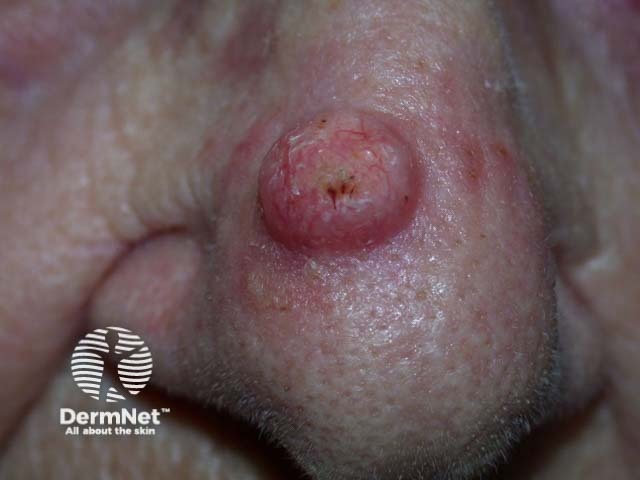
A squamous cell carcinoma on the nose
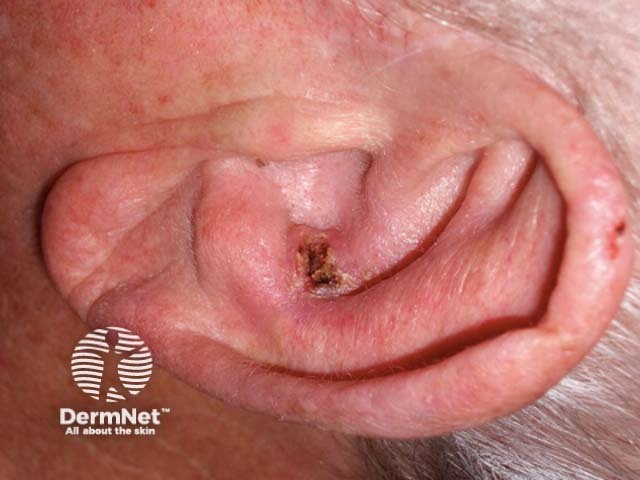
An ulcerated squamous cell carcinoma in the ear
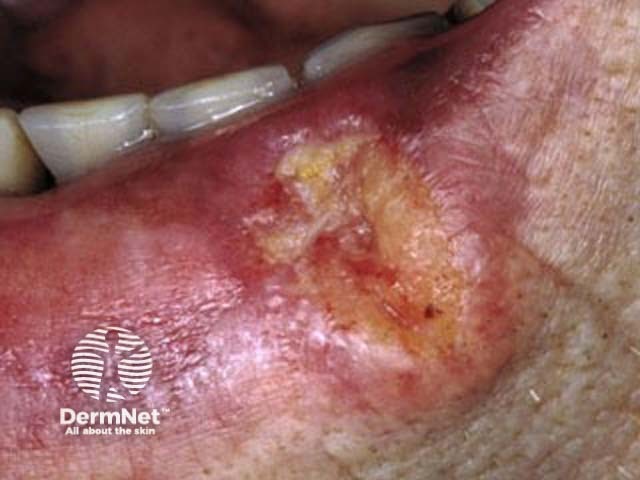
A firm ulcerated squamous cell carcinoma on the lower lip

An ulcerated squamous cell carcinoma on the foot
SCCs can be a range of different colours, including:
SCCs may range in size from a few millimetres (mm) to several centimetres (cm) across.
They usually grow quite quickly, over weeks to months.
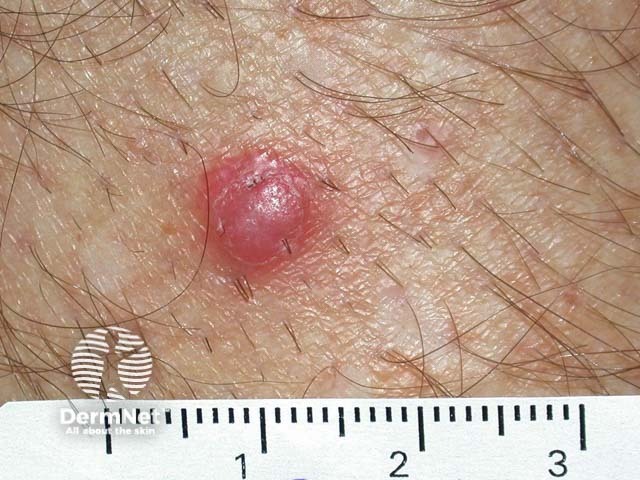
A small SCC on the arm
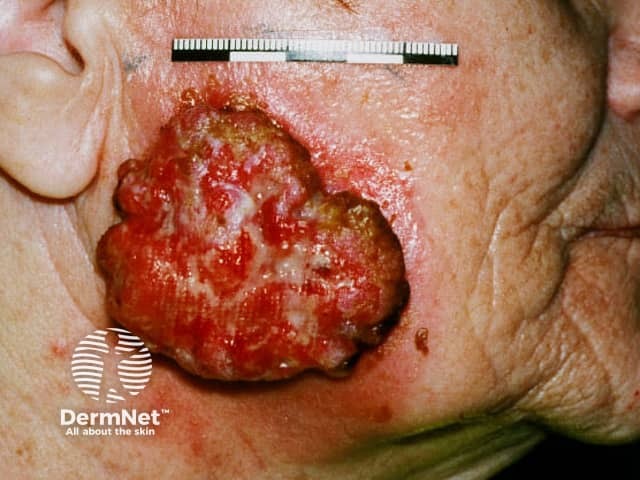
A large ulcerated SCC on the cheek
SCCs can vary in appearance — they may have one or more of the following features:
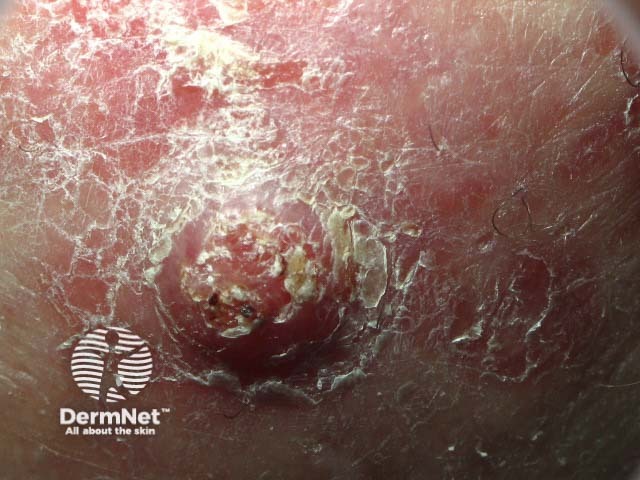
A warty nodule due to a small SCC

A SCC has arisen within an existing longstanding scar - note the raised heaped up edge
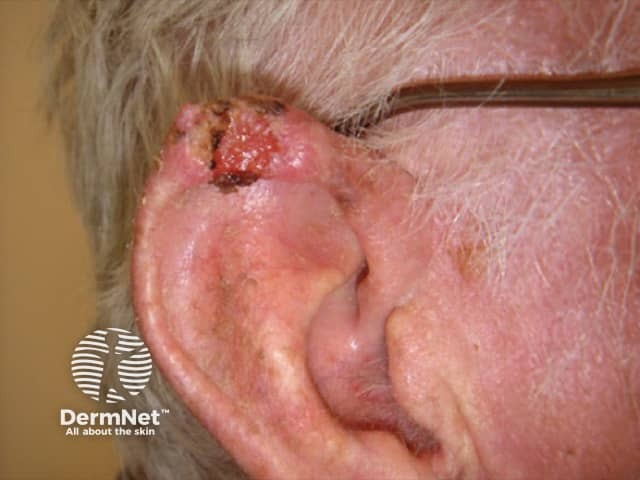
A bleeding eroded SCC on the ear - again note the heaped up edge

A cutaneous horn due to an underlying SCC
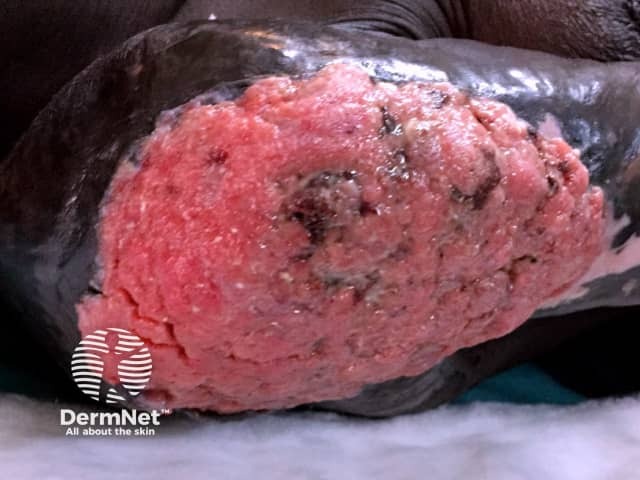
An ulcerated SCC that has arisen in a longstanding burn scar
For more information about SCC, see: